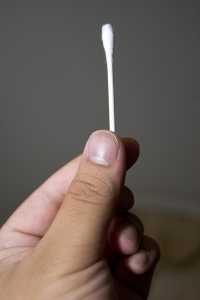21 Dec Cotton Tip Applicators Single Biggest Cause of Eardrum Ruptures
 MedicalResearch.com Interview with:
MedicalResearch.com Interview with:
Eric T. Carniol, MD, MBA
Division of Facial Plastic and Reconstructive Surgery, Department of Otolaryngology–Head and Neck Surgery, University of Toronto
Toronto, Ontario, Canada
MedicalResearch.com: What is the background for this study? What are the main findings?
Response: Tympanic membrane perforations (aka “popped” or “burst” ear drum) is a common complaint of patients presenting to the emergency room, primary care offices, and otolaryngologist (ENT doctors) offices. These may be caused by trauma, infections, or other causes. As well, many patients will use qtips (cotton-tipped applicators) to clean ears and remove ear wax and are unaware of the potential harms of doing so.
This study was designed to examine the cause of ear drum perforations as diagnosed in emergency departments in the United States.
Foreign body instrumentation of the ear (qtips, hair combs, hair pins, needles, etc) were the cause of 61.2% of perforations. Cotton tip applicators are the single leading cause of traumatic tympanic membrane perforation in all age groups except young adults (13-18) and 19-36 year olds, in which it is the second largest cause (behind water trauma).
Children less than 18 years old constitute nearly 2/3 of all ear drum perforations in the emergency department.
MedicalResearch.com: What should clinicians and patients take away from your report?
Response: Traumatic tympanic membrane perforations affect people of all ages. Qtips and other instruments that can be used to clean ears by patients are the most common cause. It is therefore important for all clinicians to counsel patients on proper ear cleaning techniques and counsel against the use of qtips and other objects to clean ears.
MedicalResearch.com: What recommendations do you have for future research as a result of this study?
Response: Further research should be pursued on the management of tympanic membrane perforations from various traumatic causes, including rates of spontaneous closure.
I would like to thank my co-authors for their help with this project.
We have no disclosures.
MedicalResearch.com: Thank you for your contribution to the MedicalResearch.com community.
Citation:
Eric T. Carniol, Amishav Bresler, Kevin Shaigany, Peter Svider, Soly Baredes, Jean Anderson Eloy, Yu-Lan Mary Ying. Traumatic Tympanic Membrane Perforations Diagnosed in Emergency Departments. JAMA Otolaryngol Head Neck Surg. Published online December 21, 2017. doi:10.1001/jamaoto.2017.2550
Note: Content is Not intended as medical advice. Please consult your health care provider regarding your specific medical condition and questions.
[wysija_form id=”1″]
Last Updated on December 21, 2017 by Marie Benz MD FAAD
